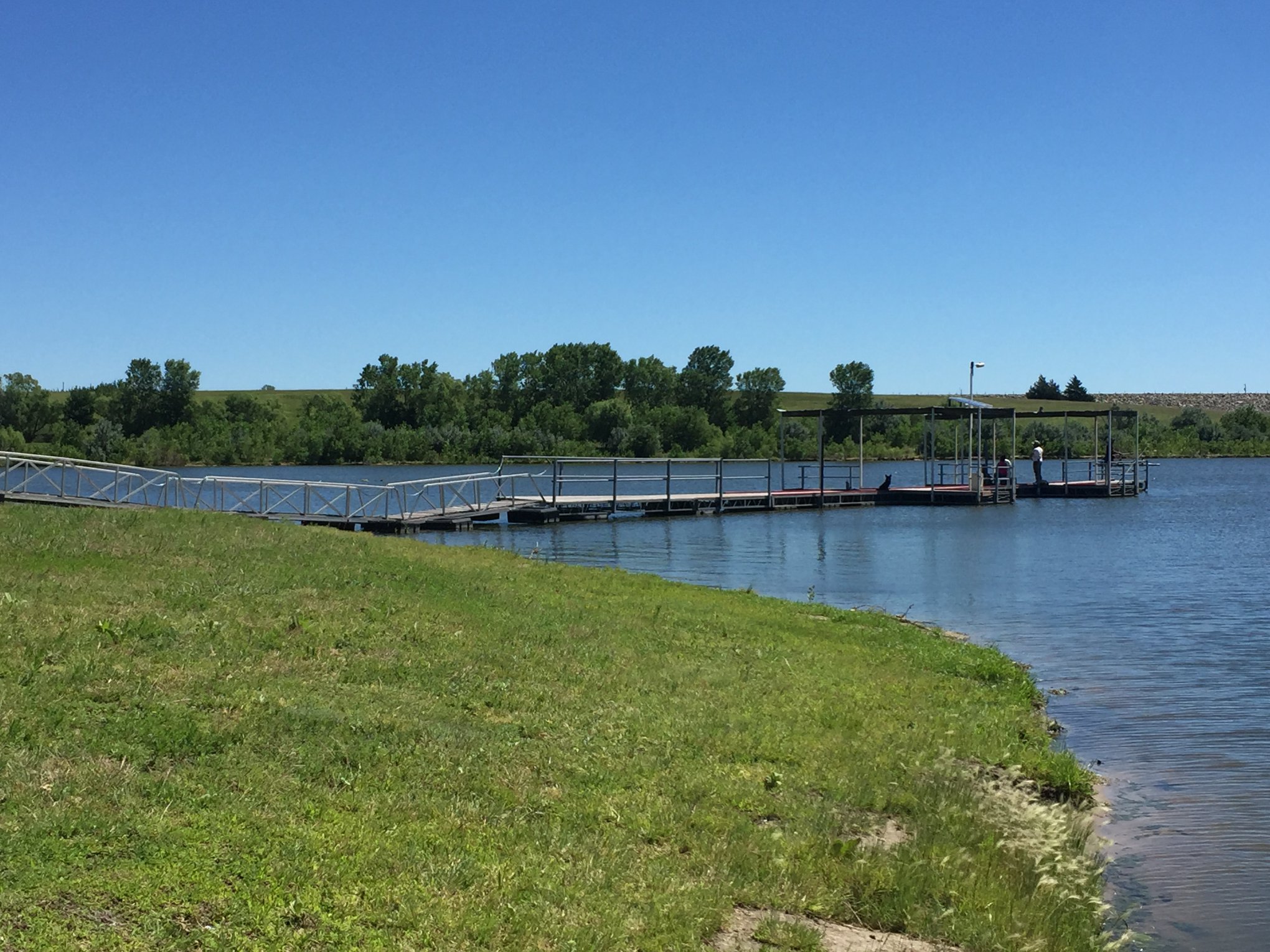
Kirwin, Waconda, Webster full; Sebelius struggling
By KIRBY ROSS
Phillips County Review
PHILLIPSBURG — Despite Phillips County and surrounding counties being under a drought watch, most of “The Little Great Lakes” of the Solomon and Republican River watersheds are doing just fine. The Little Great Lakes includes Kirwin, Sebelius, Harlan, Webster, and Waconda reservoirs.
Continuing its half-century tradition of going through periods of feast and famine, over the course of recent months Kirwin Lake levels have continued to rise, and it is now at over 100 percent of its capacity.
As recently as August 31, 2016, Kirwin held only 30,384 acre feet of water, which was 31 percent of its 98,154 acre feet capacity.
Three days after that date massive downpours 60 miles west of the lake dumped a deluge of water into the Solomon and Bow Creek drainage basins, with up to 14 inches falling in Norton and Graham counties in a few hours time.
By the end of September of 2016 the lake level had jumped all the way up to 69,704 acre feet, putting it at 74 percent of capacity.
Throughout the following 22 months Mother Nature has continued to provide a healthy dose of precipitation exactly where it needs to be to feed the lake.
So healthy, that as of June 30, 2018, Kirwin was holding 102,262 acre feet of water, putting at 104 percent of capacity. And it’s worth noting that that number is down from 108,096 af just 30 days earlier, when Kirwin was at 110 percent of capacity. Releases through the Solomon River outlet has brought it down.
Throughout the month of June, an average of 223 acre feet of water flowed into the lake per day according to monthly reservoir statistics provided by the U.S. Bureau of Reclamation. But as good as June was for Kirwin, it ranked in fourth place for inflow compared to Waconda, Harlan, and Webster.
Of all of the other area reservoirs, Sebelius in Norton County continues to be the most anemic. With a total possible conservation storage capacity of 34,510 acre feet, as of the end of June it held 14,849 af, putting it at 43 percent of capacity. This number is virtually unchanged from 12 months ago, when it was just a few hundred acre feet fuller.
Adding insult to injury, a few weeks ago the Kansas Department of Health and Environment raised a blue-green algae health alert for Sebelius, resulting in direct contact with the water being discouraged and the governor declaring a state of emergency for the city of Norton, which sources its drinking water from Sebelius. Fish caught during a blue-green algae outbreak are safe to eat provided they are rinsed with clean water.
Webster Lake in Rooks County has been faring a good bit better. As of June 30, that reservoir was 110 percent full. With a total conservation storage content capacity of 76,157 af, it stood at 83,595, which is up from 106 percent of capacity 12 months earlier.
Just across the state line north of Phillipsburg, the Harlan County Reservoir is still lower that its full capacity. At the end of June 2018 Harlan was holding 248,944 acre feet of water, which is pretty good but is 79 percent of its 314,111 capacity. Like Sebelius, Harlan is down a bit compared to 12 months ago, when it held 255,759 af of water.
The 800-pound gorilla of lakes in the region remains, and will remain for the foreseeable future, Waconda Reservoir.
Waconda had an incredible month in June 2018, averaging 1,726 af of inflow per day. That compares to 243 for Webster; 223 for Kirwin; 254 for Harlan; and 20 for Sebelius.
Sitting at the edge of a slightly different climatic region and being fed by multiple rivers and creeks, as well as a relatively major constant-flowing spring, in recent years Waconda has been able to maintain, with little difficulty, its status as being one of the largest lakes in the state of Kansas.
With a total conservation storage capacity of 219,461 acre feet, as of the end of June Waconda held 225,390, which put it at 103 percent of capacity, an improvement over 12 months earlier when it was at 98 percent of capacity.
